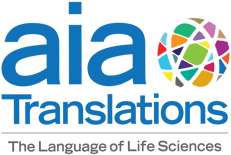
In today’s interconnected world, effective communication in healthcare has never been more critical. With patients and providers crossing linguistic and cultural boundaries, pharmaceutical medical translation agencies play a pivotal role in ensuring that vital medical information is accessible, accurate, and comprehensible. A cornerstone of this endeavor is patient-centered communication—a practice that places the patient’s needs, preferences, and understanding at the heart of every interaction. Here’s why patient-centered communication is essential for a pharmaceutical medical translation agency:
Enhancing Patient Safety
The primary goal of pharmaceutical and medical translation is to ensure that patients can safely use medications and understand medical procedures. Misinterpretations of medical terminology, dosage instructions, or warnings can have dire consequences. Patient-centered communication prioritizes clarity and empathy, ensuring that translations consider the patient’s health literacy levels and cultural context. For instance, adapting a drug’s usage instructions to reflect local cultural norms and linguistic nuances minimizes the risk of misunderstanding.
Building Trust and Credibility
Patients and healthcare providers rely on medical translations to make informed decisions. By adopting a patient-centered approach, agencies demonstrate a commitment to delivering not only accurate but also empathetic and accessible translations. This focus fosters trust among clients, whether they are pharmaceutical companies, healthcare providers, or patients themselves. A reputation for patient-centered communication can differentiate a translation agency in a competitive market.
Addressing Cultural Sensitivities
Culture plays a significant role in how patients perceive and act upon medical information. Patient-centered communication acknowledges and respects cultural differences, ensuring that translations are culturally appropriate. For example, some cultures may have unique views on specific illnesses, treatments, or dietary restrictions. Translators who understand and incorporate these nuances into their work help bridge gaps between diverse patient populations and the healthcare system.
Supporting Regulatory Compliance
Pharmaceutical companies operate in a highly regulated industry, with strict guidelines governing the dissemination of medical information. Patient-centered communication aligns with regulatory requirements by ensuring translations are accurate, clear, and understandable. Agencies that prioritize the patient’s perspective can help their clients meet international standards, such as those set by the FDA, EMA, or ISO.
Promoting Health Equity
Language barriers can exacerbate health disparities, leaving non-native speakers at a disadvantage. By adopting a patient-centered approach, translation agencies help level the playing field, ensuring that all patients have access to the same quality of care and information. This not only improves individual health outcomes but also contributes to broader public health goals.
Boosting Patient Engagement
Empowered patients are more likely to adhere to treatment plans and achieve better health outcomes. Patient-centered communication ensures that translations are engaging, actionable, and tailored to the audience’s needs. Whether it’s a patient information leaflet, consent form, or educational brochure, the goal is to make the content as user-friendly as possible.
Best Practices for Patient-Centered Communication in Medical Translation
To implement patient-centered communication effectively, pharmaceutical medical translation agencies should:
-
Invest in Training: Ensure translators are trained in medical terminology, cultural competence, and plain language techniques.
-
Engage Native Speakers: Collaborate with native speakers from the target audience to validate translations and ensure cultural relevance.
-
Utilize Technology Wisely: Leverage tools like translation memory and AI to maintain consistency while leaving room for human oversight.
-
Prioritize Feedback: Collect feedback from patients and healthcare providers to refine and improve translations continuously.
-
Focus on Accessibility: Ensure materials are accessible to people with disabilities, including offering translations in Braille or audio formats when needed.
By embracing patient-centered communication, pharmaceutical medical translation agencies not only enhance the accuracy and accessibility of medical information but also contribute to a more inclusive and equitable healthcare system. Prioritizing the needs and perspectives of patients ensures safer outcomes, builds trust, and paves the way for global health improvements.
